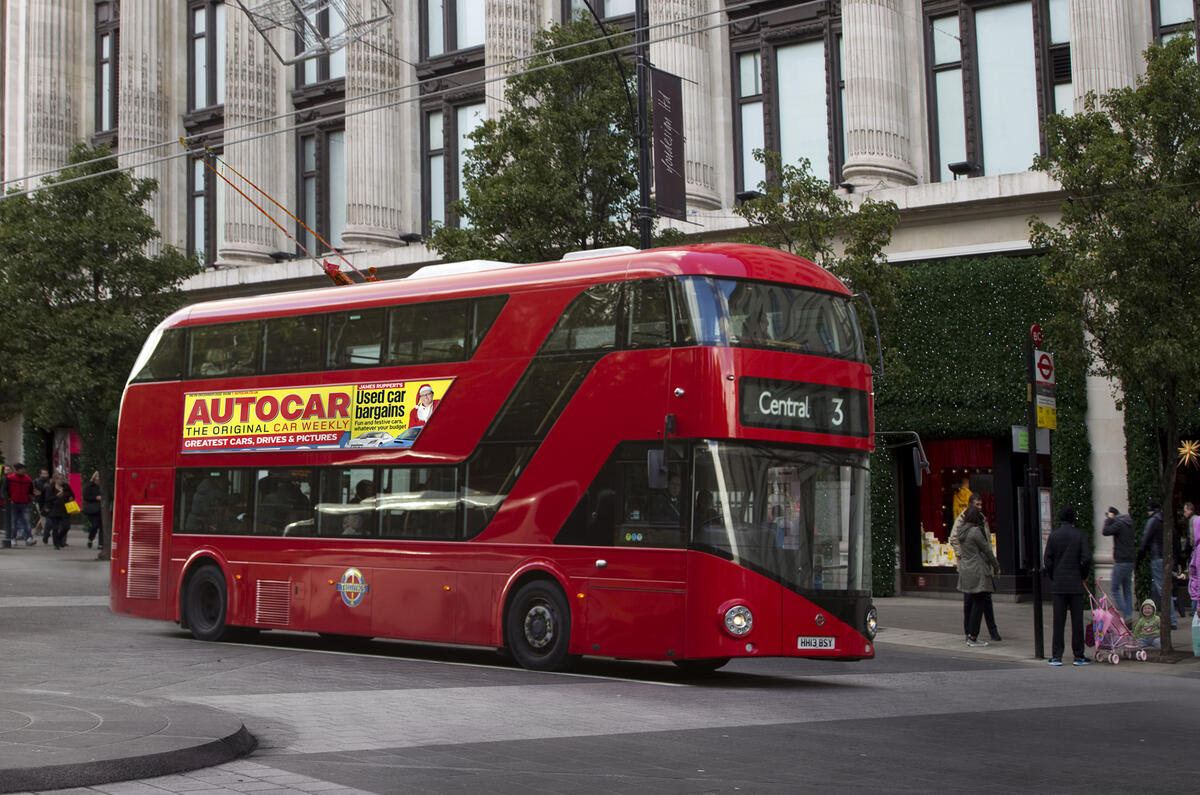Five years ago, in the 2007 Christmas issue, Autocar commissioned an engineering proposal for a new-generation Routemaster bus. We thought it was time that old-fashioned buses, using commercial vehicle technology, were brought up to date. They needed to be slicker, more appealing and far less polluting.
Boris Johnson liked the idea. When he became mayor, he commissioned a design competition for a new bus. The result was an electrically driven, range-extender hybrid double-decker with three doors and two staircases. Last year we drove the final production version of the New Bus for London (NB4L), designed and manufactured by Wrightbus.
With 600 of the new buses recently ordered, we thought we might build on that success by suggesting the next step in the updating of the UK’s miserable inner-city public transport network. It’s time to bring back the electrically driven trolley bus.
Although hybrid buses are much better in terms of air pollution (the NB4L’s engine/generator is nearly half the size of a typical bus engine), high bus density and busy, narrow streets concentrate the problem. Oxford Street is an extreme example. It has an estimated 200 million visitors per year, who have to fight with 300 buses per hour.
The biggest problem for Edinburgh – and any other city that wants a tram network – is the massive cost of digging down into the road and moving all the underground services. It is estimated at £80m per mile just to lay the track. The cost for doing the same on 1.5 miles of Oxford Street can only be imagined.
This is where the trolley bus comes in. Although it takes power from overhead cables, it is otherwise a normal bus, running on the existing road surface. And because the NB4L is a series hybrid (it has an engine/generator that is not connected to the wheels), it could be converted remarkably easily to become a trolley bus.
The answer to Oxford Street’s woes – and many other unattractive shopping centres around the UK – is pedestrianisation and the replacement of the regular buses with a trolley bus shuttle service running between the new Crossrail station at Tottenham Court Road in the east and Marble Arch in the west.
The overhead power wires could be contained on a central pylon system, so the shuttle trolley buses run parallel, close to the centre of the road. The NB4L’s three doors and two staircases mean that getting people on and off would be a swift process. The unobstructed route would also allow the bus to brake entirely on its motors, eliminating the tiny particles given off from the pads and discs by friction braking. The result would be public transport that is not only free of any kind of air pollution, particulates or noise pollution but is also hugely cheaper than a tram.





Join the debate
Add your comment
i love this car.. skynet
skynet
Retractable trolley poles
The trolleybus idea could be rolled out far beyond Oxford St with a bit of 21C thinking. Surely it can't be complicated to have double-decker NBFLs with retractable trolley poles, automatically raising via radio signal/wi-fi/GPS/ voodoo/whatever when the bus reaches the overhead cabling zone. When it gets to the end of the zone, it automatically retracts again and the bus continues merrily along using diesel or stored battery energy as required.
Similarly, if there is a problem along the overhead cabling zone, the pole can be retracted by the driver at the touch of a button and the bus simply moves around the problem like any ordinary bus.
This could be applied along any route where there is the possibility/need to install the cabling, and would give any cable-equipped NBFL the chance to charge its batteries while connected to the cable, for using in non-cabled parts of the route.
Overhead Wire
Mr. Holloway,
The Overhead wire idea belongs in the past. Wireless is the way to go, with an under-tarmac infrastructre existing in vehicle charging docks, the next step will be wider implementation on roads.